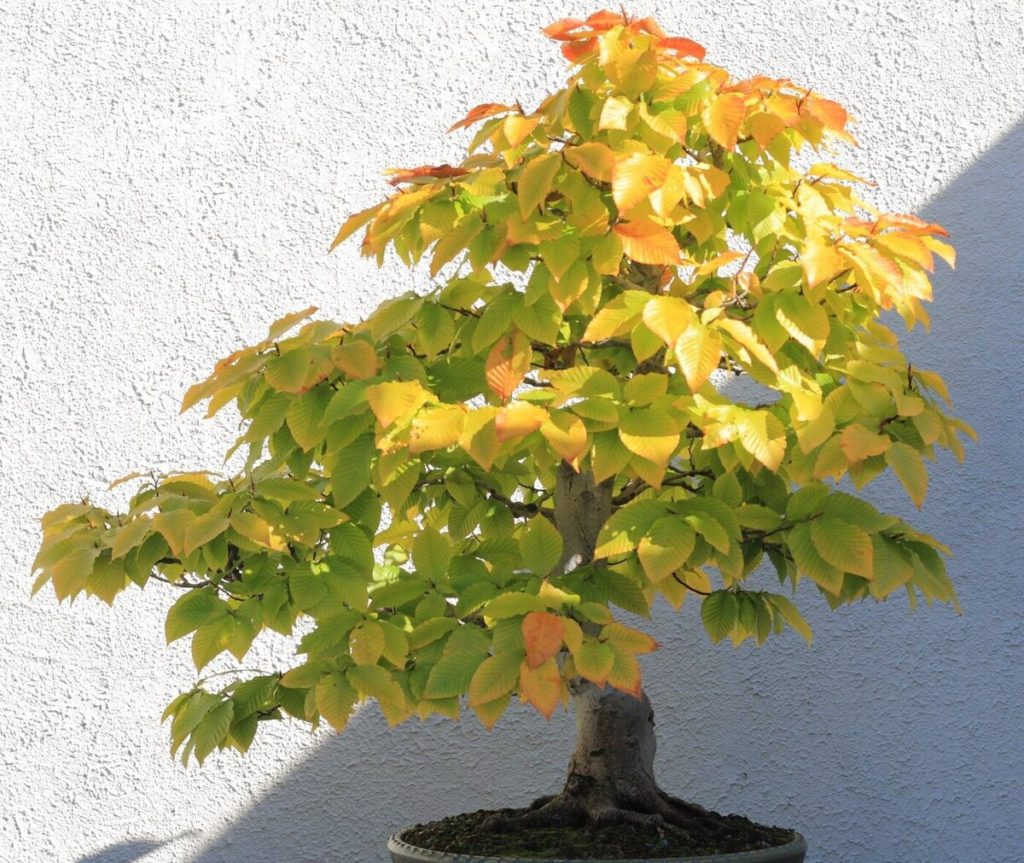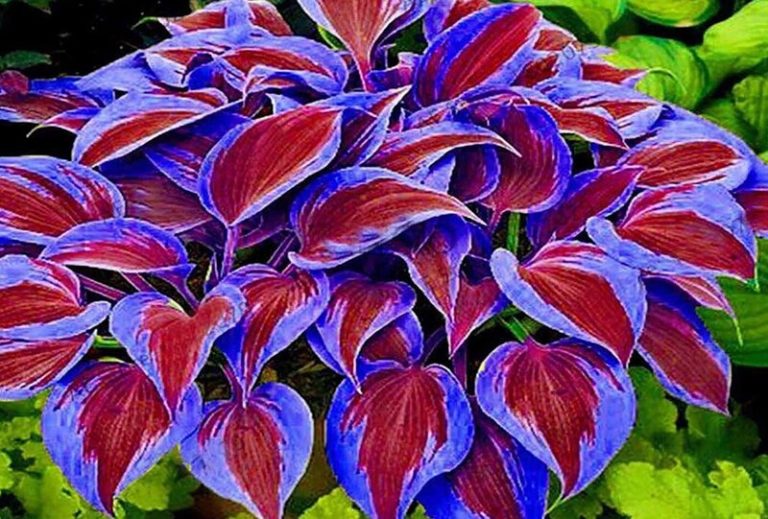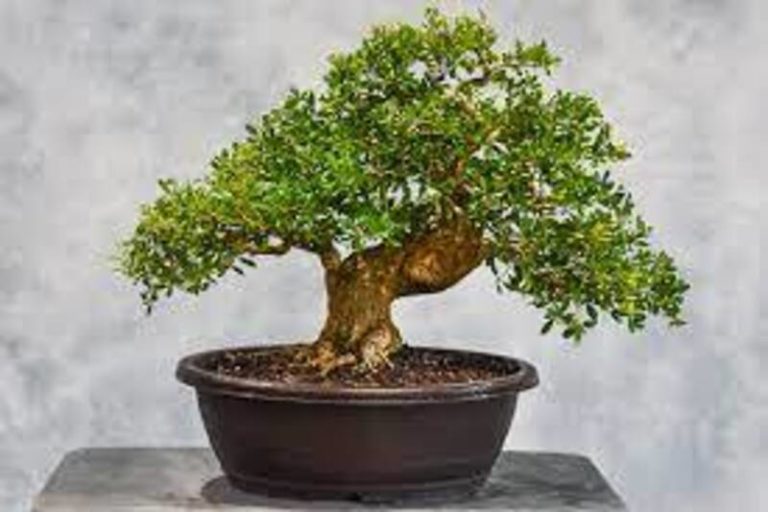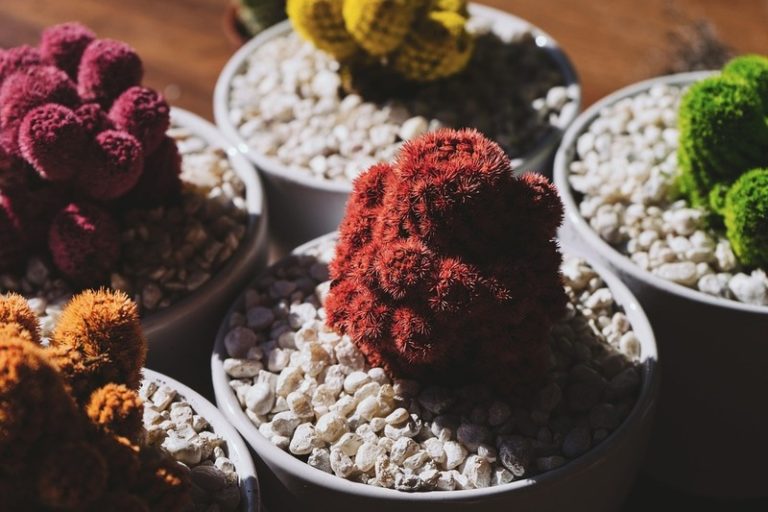American Beech Bonsai: Cultivating Tiny Forest Giants
American Beech Bonsai may seem sophisticated, but it’s simply a fascinating method to grow a little tree that resembles the large ones you see in the forest. In this article, you’ll learn how to cultivate and care for your own American Beech Bonsai.
What is American Beech Bonsai?
American Beech Bonsai (Fagus grandifolia) is the art of using bonsai methods to grow and shape American Beech trees into small works of art. It includes picking out the right tree, trimming, wiring, and continued care to keep it healthy and in the right shape. This makes a small, beautiful tree that shows off the unique qualities of the American Beech in a compact shape.
History and Origins of the American Beech Bonsai
Bonsai is an old art form that started in China more than a thousand years ago and went to Japan, where it was improved and became more famous. This is where American Beech Bonsai got its start. Growing American Beech trees as bonsai, on the other hand, is probably a newer practice that started in the 20th century or later.
The American Beech tree, or Fagus grandifolia, is native to eastern North America. It has long been praised for its stately beauty and beautiful shape in nature. Bonsai fans probably came up with the idea of making small versions of these beautiful trees because they wanted to capture the essence of native species in their art.
While the precise individuals or communities responsible for first cultivating American Beech Bonsai may not be documented, it is part of a broader tradition of bonsai cultivation that has evolved and spread worldwide. Today, people who like American Beech Bonsai keep improving methods, styles, and looks, which helps this unique form of bonsai art continue to grow.
American Beech Bonsai and Their Symbolism
The American Beech Bonsai has significance in the world of bonsai and in other fields as well. These are some important points:
- Elegance and Strength: The American Beech tree is known for being strong and having a beautiful shape. When grown as a tree, it stands for beauty, toughness, and strength. This meaning can be seen in both the way the tree looks and the skill that goes into growing it.
- Connection to Nature: In general, bonsai stands for a close link to nature and the beauty of the natural world. This link is shown by the American Beech Bonsai, which is a small version of a tree that grows in forests and fields. It helps us remember how we are related to this planet and how important it is to protect its beauty.
- Longevity and Endurance: Beech trees are recognized for their long longevity, typically lasting hundreds of years. As bonsai, they represent longevity and endurance, reminding us of the passing of time and the value of patience and persistence in life.
- Balance and Harmony: Bonsai is an art form that focuses on balance, harmony, and simplicity. American Beech Bonsai exemplifies these qualities with its meticulously groomed branches, balanced proportions, and tranquil beauty. It depicts the harmony that may be established through careful cultivation and attention to detail.
- Adaptability and Growth: Bonsai trees, especially American Beech Bonsai, require ongoing care and maintenance to grow. They represent flexibility and growth since they respond to changes in their environment and continue to develop and expand with time. This symbolism symbolizes nature’s tenacity and adaptation while also reminding us of the possibilities for personal growth and evolution.
In essence, American Beech Bonsai represents elegance, resilience, natural connection, balance, harmony, adaptation, and development. It is a living manifestation of the natural world’s beauty and intricacy, as well as the human potential for creativity, patience, and love of life.

Characteristics of the American Beech Bonsai
The American Beech (Fagus grandifolia) is a tree that grows naturally in eastern North America. It can also be grown as a bonsai. If you want to grow an American Beech bonsai, here are a few facts you should know about it:
- Leaves: American Beech trees have simple, alternate leaves that are oval and have a pointy tip. The edges of the leaves are toothed. They lose their leaves every year, so in the fall, they change color and fall off.
- Bark: When the American Beech is young, its bark is smooth and light gray. As it ages, it gets darker and gets ridges.
- Size: The tallest American Beech trees in the wild can reach more than 70 feet in height. If you grow them as bonsai, though, you can keep them much smaller, usually between 12 and 36 inches tall.
- Trunk: The American Beech trunk can develop fascinating characteristics over time, including smooth bark that can create interesting textures and patterns as the tree ages.
- Roots: For bonsai, the American Beech is a good choice because its roots are fibrous and short. You can teach them to grow radial roots that fit in with the general design of the bonsai.
- Light and Temperature: American Beech trees like some shade better than full sun. Even though they are hardy trees that can handle cold, they should be protected from the worst of the cold to avoid damage from snow.
- Soil and Watering: For American Beech bonsai, the dirt needs to drain well so that it doesn’t get too wet, which can cause root rot. Soil should be kept evenly moist but not soaked in water because they like stable amounts of moisture.
- Pruning and Training: American Beech bonsai do well with methods for pruning and training. Regular pruning helps the tree keep its shape and size, and wires can be used to direct the growth of branches and give the bonsai the shape you want.
- Repotting: Every two to three years, you should repot the plant to keep the dirt fresh and help the roots grow in a healthy way. The best time to repot a tree is in the spring, right before it starts to grow quickly.
- Pests and Diseases: People who own American Beech bonsai trees usually don’t have problems with pests or diseases, but they can still get aphids, scale insects, and fungal diseases. Infestations and illnesses can be avoided by checking for them regularly and treating them properly.
Overall, growing and taking care of an American Beech bonsai can be fun and satisfying. They are a beautiful miniature version of a native North American tree. They can grow into beautiful bonsai specimens if they get the right care and attention.
How to Grow an American Beech Bonsai
Growing American Beech as a bonsai may be a rewarding project, but it does need careful planning and patience. Here’s a detailed guide on growing bonsai made of American beech:
- Selecting the Tree: Pick out a young American Beech tree whose stem is about 1 to 2 inches wide. You can either get a young tree in the wild or buy one from a nursery.
- Choosing a Pot: Pick a small bonsai pot with lots of holes in it so water can drain. The pot should be a little bigger than the tree’s root ball.
- Repotting: The young tree should be repotted in early spring, right before it starts to grow new leaves. Carefully take the tree out of its pot and cut off about a third of the root ball. Remove any roots that are spinning and spread the ones that are left out in a circular pattern. Fill the new pot with bonsai soil that drains well and then put the tree in it.
- Pruning: American Beech trees typically develop their branches in a long, straight line. Regular branch pruning will promote a more compact and bonsai-like look. To trim undesirable branches and foliage, use sharp bonsai shears. During the growth season, which is usually in the spring or early summer, pruning should be done.
- Wiring: The American Beech bonsai’s stems can be shaped with wire. To get the branches where you want them, gently bend and shape them with metal bonsai wire. Be careful not to put too much pressure on the twigs, as they are very fragile and can break easily.
- Watering: American Beech bonsai trees like soil that stays consistently moist. When the top inch of dirt feels dry to the touch, give the plant a lot of water. Don’t let the soil dry out all the way, because that can be hard on the plant. But be careful not to water too much, as that can cause root rot.
- Fertilizing: Fertilize your American Beech bonsai every two weeks during the growing season. Use a balanced liquid fertilizer that has been diluted to half strength. In the fall and winter, when the tree is dormant, fertilizer should be reduced.
- Protection: Aphids, scale insects, and caterpillars are among the pests that can affect American Beech bonsai plants. Keep an eye out for any indications of pest infestation on the plant and treat it with chemical or organic pesticides as needed.
- Winter Care: During the winter, give the bonsai some protection, particularly if you reside in a cold area. The tree should be kept in a shed or unheated garage where the temperature stays above freezing. As an alternative, you can wrap the pot with mulch or burrow it into the ground to shield the roots from freezing temperatures.
- Patience: It takes time and care to grow a bonsai tree. It can take a few years for American Beech bonsai trees to look fully grown, so be ready to give your tree a lot of time and care.
By following these steps and providing proper care, you can successfully grow a beautiful American Beech bonsai tree.
Displaying and Showcasing the American Beech Bonsai
Putting your American Beech bonsai on display is an important part of bonsai gardening because it lets other people see how beautiful your tree is. Some ways to show off your American Beech bonsai are listed below:
- Choose an Appropriate Display Stand: Pick a bonsai display stand that goes with the look and style of your American Beech bonsai. Traditional wooden stands or exquisite ceramic stands can improve the overall appearance of the tree.
- Consider the Season: Adjust your bonsai’s display to reflect the seasons. During the growth season, place your American Beech bonsai outside where it will receive plenty of sunlight and fresh air. In the winter months, you may need to keep the bonsai indoors near a bright window to protect it from frost and freezing weather.
- Positioning: Carefully consider where you put your American Beech bonsai in its show area. Position the tree so that its best features, like the way its body moves, the way its branches are shaped, and the way its leaves are arranged, stand out. Focus on imbalance and balance by using the “golden triangle” concept for placement.
- Enhance with Accents: You can make your American Beech bonsai look better by adding accessories like small rocks, figurines, or tiny scenery features. These little touches can bring out the natural beauty of the bonsai and make the scene look better.
- Rotate the Display: In order to keep the tree from growing unevenly, you should move your American Beech bonsai around every so often. The tree can also be seen from different angles over time.
- Lighting: When you put your bonsai on show inside, pay attention to the lights. The bonsai should be placed near a window that gets a lot of natural light. If you need to, you might want to use extra grow lights, especially in the winter when the days are shorter.
- Showcasing at Bonsai Exhibitions: If you want to show off your American Beech bonsai at a bonsai show or display, make sure the tree is well-kept and in great shape. To improve the tree’s look, clean the leaves, get rid of any that are dying or turning yellow, and trim as needed.
- Documenting Progress: Use photos or a bonsai notebook to keep track of how your American Beech tree grows. Writing down how the tree changes and grows over time can be a fun way to see how it grows and changes.
By using these tips, you’ll be able to show off your American Beech bonsai in the best way possible, so you can enjoy its beauty and share it with other bonsai fans.

Styling and Design of an American Beech Bonsai
To style and create an American Beech bonsai, you have to shape the tree to show off its natural features while following the rules of bonsai beauty. Here are some tips on how to shape and style your American Beech Bonsai:
- Study the Tree: Before you start to shape your American Beech bonsai, look at its base, branches, and leaves very carefully to find out what makes it special. Think about how the tree naturally grows, how its branches are structured, and if the trunk has any interesting features, like twists or bends.
- Select a Style: Pick a bonsai style that goes well with the way your American Beech tree looks naturally. Styles of bonsai that are often seen are formal upright, informal upright, slanting, cascade, and semi-cascade. Because their branches are graceful and curve out, American Beech trees often look good in casual straight or slanting styles.
- Identify Key Features: Figure out which parts of your American Beech bonsai you want to draw attention to when you style it. This could include how the stem moves, where the main branches are placed, and its general balance and symmetry.
- Prune for Structure: Sharp bonsai trimming shears should be used to cut off any branches, shoots, or leaves that you don’t want. Pay attention to making a clear branch structure that fits the style of bonsai you’ve chosen. To get a clean, open silhouette, cut away any twigs that are touching or fighting with each other.
- Wire for Shape: If you need to, you can gently shape and place the branches of your American Beech tree with bonsai wire. The bigger branches at the bottom should be used first, then the thinner branches at the top. American Beech trees have soft wood that can easily break if you wire the twigs too much.
- Create Taper: To make your American Beech bonsai look more like a real tree, make the trunk and branches narrow. The branch tips get thinner as you go from the base of the tree to the tips of the branches. This is called taper. Over time, you can get taper by trimming and selecting branch growth.
- Balance and Proportion:When you style your American Beech bonsai, pay attention to balance and proportion. Make sure the branches are spread out properly around the tree and that the design looks good as a whole. When you place stems and leaf pads, try to make them look balanced and in the right place.
- Refine Over Time: To style a bonsai, you have to be patient and pay close attention to the little things. Over time, regular cutting, wiring, and care will help you make your American Beech bonsai look even better. Let the tree grow and develop, but keep working on its structure and shape.
- Seek Inspiration: Get ideas from bonsai teachers, books, and the internet to improve your styling skills and come up with your own unique style for your American Beech tree.
By following these tips and tricks, you can style and design your American Beech bonsai to make a beautiful arrangement that shows off the tree’s natural beauty.
How to Care for and Maintain an American Beech Bonsai
Provide proper growth conditions, do routine maintenance, and give the tree careful attention to maintain its health and vigor while caring for and keeping an American Beech bonsai. A thorough guide on maintaining and caring for your American Beech bonsai can be found here:
- Light: American Beech bonsai trees thrive in partial shade to full sun. Give your bonsai at least four to six hours of straight sunshine every day. Provide bright, indirect light near a window if kept inside.
- Watering: Make sure the soil is always damp, but not soaked. When the top inch of soil on your American Beech bonsai feels a little dry to the touch, give it a lot of water. Depending on things like weather and humidity, change how often you water your plants. You should keep the soil from drying out or getting too wet, as this can put stress on the tree.
- Soil: Use bonsai soil that drains well to make sure the roots get enough air and water. For American Beech bonsai, a mix of Akadama, pumice, and lava rock is often used. You should repot the bonsai every two to three years to keep the soil fresh and keep the root ball from getting too squished.
- Fertilizing: During the growing season (spring through fall), give your American Beech bonsai regular fertilizer to give it the nutrients it needs for good growth. Every two to four weeks, use a balanced liquid fertilizer that has been reduced to half strength. During the winter, when the tree is dormant, fertilize it less or not at all.
- Pruning: Regularly prune your American Beech bonsai to keep its shape, support ramification (branching), and back-budding. Sharp bonsai trimming tools can be used to cut off branches, shoots, and leaves that you don’t want. Cut back on trimming during the growing season. Don’t do a lot of clipping in the winter.
- Wiring: Your American Beech bonsai’s stems can be shaped and trained with wire. To make the shape you want, gently bend and place the branches with metal bonsai wire. American Beech limbs are weak and easily break, so be careful not to wire them too tightly. Get the lines out of the way before they cut the bark.
- Pest and Disease Control: If you have an American Beech bonsai, check it often for signs of pests like aphids, scale insects, and worms, as well as common bonsai diseases like root rot and powdery mildew. Following the manufacturer’s directions, treat infestations right away with the right poisons or fungicides.
- Winter Care: Protect your American Beech bonsai from the cold during the winter, especially if you live in a cold area. It is best to keep the bonsai in a garage, shed, or cold frame that is not warm and stays above freezing. Cover the pot with soil or bury it in the ground to keep the roots warm during the winter.
- Repotting: Every two to three years, give your American Beech bonsai a new pot to help the soil stay fresh, trim the roots, and encourage healthy growth. Usually, repotting is done in early spring, before the plants start to grow again. Cut off a third of the root ball, get rid of any roots that are circling, and put the bonsai in a new pot with bonsai soil.
- Observation and Adjustment: Check your American Beech bonsai often for signs of stress, like leaves that are dying, turning yellow, or not growing as much as they should. You may need to change how you care for the tree depending on how it reacts to changes in the surroundings.
By carefully following these care instructions and giving your American Beech bonsai regular attention, you can keep it healthy and help it grow into a beautiful specimen over time.
American Beech Bonsai Care Sheet
| Aspect | Care Tips |
|---|---|
| Watering | Keep soil consistently moist, watering when the top inch of soil feels slightly dry. Avoid waterlogging. |
| Sunlight | Provide partial shade to full sun exposure, ensuring the bonsai receives 4-6 hours of direct sunlight daily. |
| Temperature | Keep the bonsai in a location with temperatures between 60-80°F (15-27°C) during the growing season. Protect from extreme heat or cold. |
| Humidity | Maintain moderate humidity levels around the bonsai, especially indoors. Use humidity trays or misting to increase humidity if necessary. |
| Fertilization | Apply balanced liquid fertilizer diluted to half strength every 2-4 weeks during the growing season. Reduce or withhold fertilization in winter. |
| Pruning and Trimming | Regularly prune to maintain shape and encourage ramification. Heavy pruning should be avoided in winter. Remove dead or unhealthy branches promptly. |
| Wiring and Styling | Use aluminum bonsai wire to shape branches gently, taking care not to wire too tightly. Style the bonsai according to your chosen aesthetic. |
| Repotting | Repot every 2-3 years in early spring before new growth begins. Trim roots, remove circling roots, and repot in fresh bonsai soil. |
| Pest and Disease Control | Monitor regularly for pests and diseases. Treat infestations promptly with appropriate insecticides or fungicides. |
| Winter Care | Protect from freezing temperatures by placing in an unheated garage or shed. Insulate roots with mulch or bury the pot in the ground. |
| Regular Maintenance | Regularly observe for signs of stress, adjust care routine as needed. Rotate the bonsai periodically for even growth. |
| General Tips | Avoid overwatering or underwatering. Provide good airflow around the bonsai. Protect from strong winds and drafts. |
Make sure to change these care tips to fit your American Beech Bonsai’s needs and the conditions where it exists. To keep a bonsai healthy and growing, it needs to be looked at and adjusted on a regular basis.
Conclusion:
You need to be patient, pay close attention to details, and follow bonsai care rules in order to grow an American Beech tree. Making sure the tree gets enough light, water, and nutrients, as well as regular trimming and cutting, helps keep it healthy and beautiful. With the right care, an American Beech bonsai can grow into a beautiful tiny work of natural art.
FAQ:
Q: What is the ideal sunlight requirement for American Beech Bonsai?
Ans: American Beech bonsai do best in full sun to partial shade, getting 4 to 6 hours of strong sunshine every day.
Q: How often should I water my American Beech Bonsai?
Ans: Keep soil consistently moist, watering when the top inch of soil feels slightly dry. Avoid waterlogging.
Q: When should I fertilize my American Beech Bonsai?
Ans: During the growth season, use a balanced liquid fertilizer that has been reduced to half strength every two to four weeks. In the winter, use less or no fertilizer.
Q: How do I prune my American Beech Bonsai?
Ans: Regularly prune to maintain shape and encourage ramification. Heavy pruning should be avoided in winter.
Q: When should I repot my American Beech Bonsai?
Ans: Every two to three years, repot the bonsai in the early spring before new growth starts. Trim the roots and fill the pot with new soil.
Q: How do I protect my American Beech bonsai during winter?
Ans: Store in a shed or unheated garage to protect from freezing weather. Cover the pot with soil or use mulch to insulate the roots.
Q: How can I prevent pests and diseases on my American Beech Bonsai?
Ans: Keep a frequent eye out for pests and illnesses, and take quick action to treat infestations with the right pesticides or fungicides.
Q: Can I wire and style my American Beech Bonsai?
Ans: Yes, use aluminum bonsai wire to gently shape branches, taking care not to wire too tightly. Style the bonsai according to your aesthetic vision.
Also Read:








